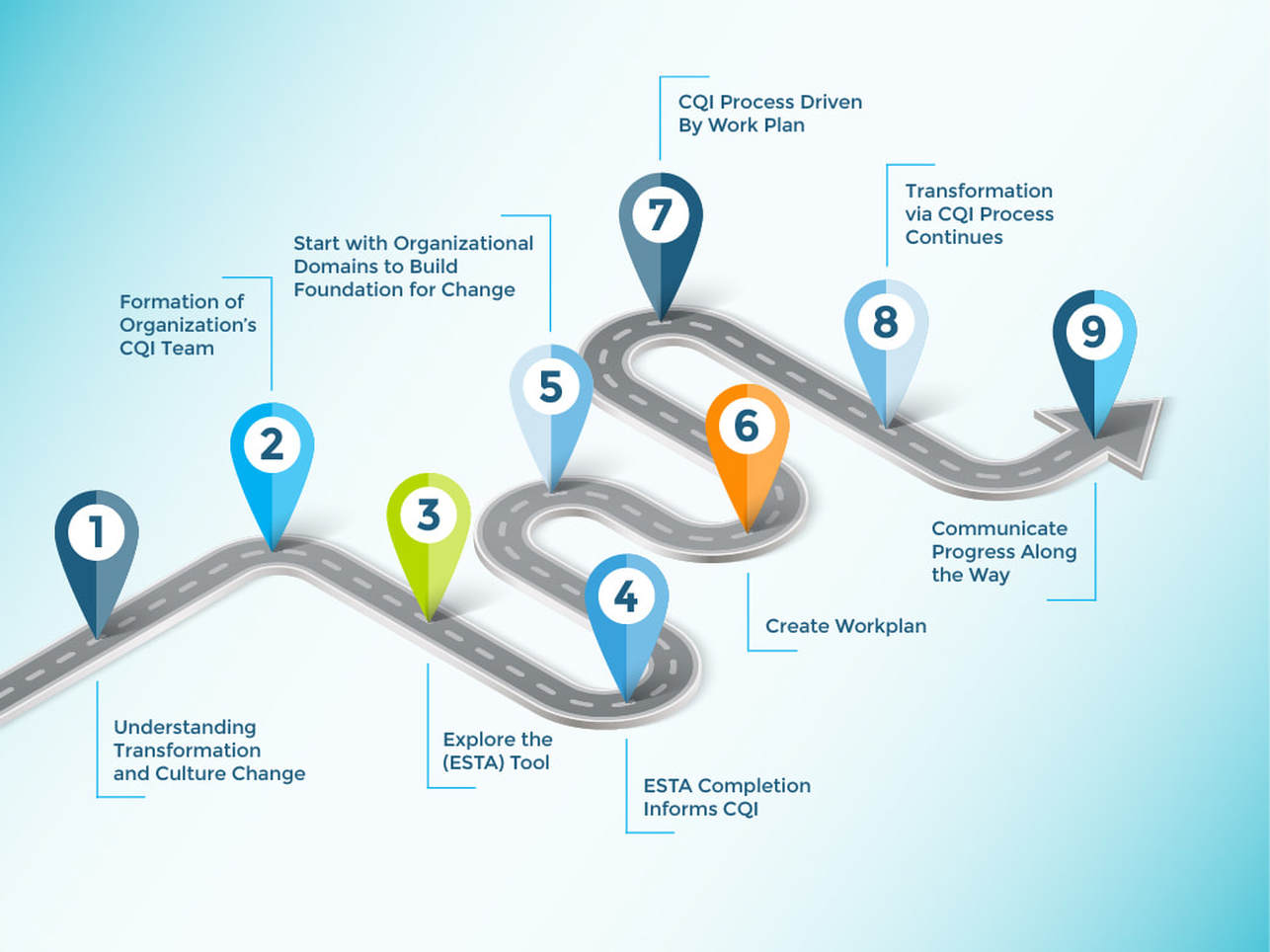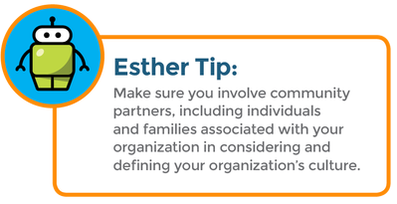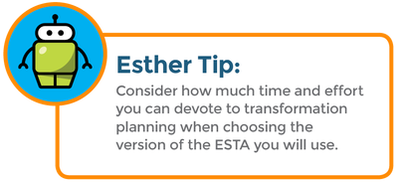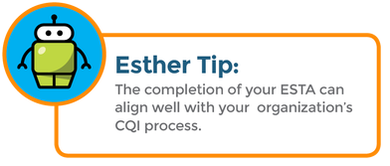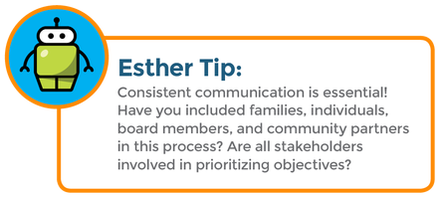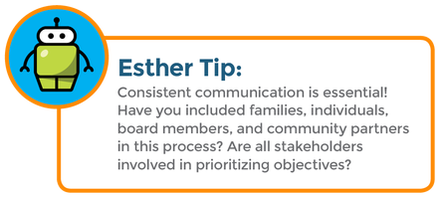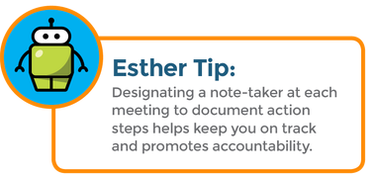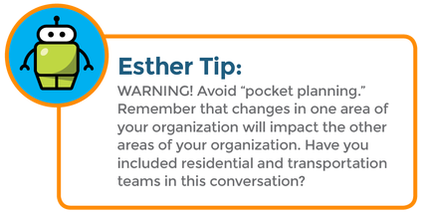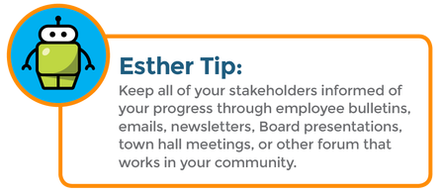The Transformation Trail: Mapping Your Progress Along the Way
Transformation is a journey — a winding path with many forks in the road. Whatever route chosen, with focused commitment, the journey will lead to enduring culture change.
The Transformation Trail depicts the often-circuitous nature of navigating transformation – a journey that by its nature includes stops, starts, challenges, and, eventually, the attainment of identified goals. Consider the markers on the trail as individual signposts in the transformation journey that may or may not proceed in the particular order portrayed.
The Transformation Trail depicts the often-circuitous nature of navigating transformation – a journey that by its nature includes stops, starts, challenges, and, eventually, the attainment of identified goals. Consider the markers on the trail as individual signposts in the transformation journey that may or may not proceed in the particular order portrayed.
Click on the underlined links below to use the resources as you plot the course of your transformation journey.
Landmark #1: Understanding Transformation and Culture Change
Transformation of an organization usually begins with developing a comprehensive understanding of the agency’s culture and considering ways it may need to change. Use the Resources below to learn more about the process of Culture Change and/or visit the Culture Change tab.
Transformation of an organization usually begins with developing a comprehensive understanding of the agency’s culture and considering ways it may need to change. Use the Resources below to learn more about the process of Culture Change and/or visit the Culture Change tab.
|
| ||||||||
Landmark #2: Formation of the Organization’s CQI Team
The formation of a dedicated Continuous Quality Improvement (CQI) team at the beginning of the transformation process will support the organization to build a solid foundation for the anticipated changes. Explore the resources below to learn about the role of CQI in the transformation process and how to develop an effective CQI team.
Continuous Quality Improvement (CQI) will inform the process of transformation at each stage of the journey. You will be reminded to implement your organization’s CQI process at Landmarks #4, #7 and #8 as well.
The formation of a dedicated Continuous Quality Improvement (CQI) team at the beginning of the transformation process will support the organization to build a solid foundation for the anticipated changes. Explore the resources below to learn about the role of CQI in the transformation process and how to develop an effective CQI team.
Continuous Quality Improvement (CQI) will inform the process of transformation at each stage of the journey. You will be reminded to implement your organization’s CQI process at Landmarks #4, #7 and #8 as well.
|
| ||||||||||||||||||||||||
Landmark #3 Explore the Employment Supports Transformation Assessment (ESTA) Tool
The Employment Supports Transformation Assessment (ESTA) is a self-assessment tool that evaluates an organization’s transformation progress across nine domains: Leadership, Strategic Planning, Financial Sustainability, Strategic Partnerships, Corporate Structure, Continuous Quality Improvement, Strategies for Community Inclusion, Workforce Preparation and Human Resources, and Individual and Family Collaboration. Using the ESTA, organizations are able to identify those areas that present challenges and barriers in developing broader, all-inclusive initiatives for implementing employment services and supports. The ESTA is offered in 3 accessible versions: the ESTA, Mini ESTA and Electronic ESTA.
The Employment Supports Transformation Assessment (ESTA) is a self-assessment tool that evaluates an organization’s transformation progress across nine domains: Leadership, Strategic Planning, Financial Sustainability, Strategic Partnerships, Corporate Structure, Continuous Quality Improvement, Strategies for Community Inclusion, Workforce Preparation and Human Resources, and Individual and Family Collaboration. Using the ESTA, organizations are able to identify those areas that present challenges and barriers in developing broader, all-inclusive initiatives for implementing employment services and supports. The ESTA is offered in 3 accessible versions: the ESTA, Mini ESTA and Electronic ESTA.
|
Landmark #4: ESTA Completion Informs CQI
The results of the ESTA and scores in each domain will provide baseline information to guide your agency’s CQI process.
Review the resources recommended under Landmark# 2.
The results of the ESTA and scores in each domain will provide baseline information to guide your agency’s CQI process.
Review the resources recommended under Landmark# 2.
Landmark #5: Start With Organizational Domains To Build Foundation For Change
The completion of the ESTA will identify the challenges your organization encounters in each of the domains. Because the organization is responsible for driving the change process, it is essential to address the Leadership, Strategic Planning, and Financial Sustainability domains first. You will find discussion questions to help you consider your progress in each of these domains under ESTA Domains.
The completion of the ESTA will identify the challenges your organization encounters in each of the domains. Because the organization is responsible for driving the change process, it is essential to address the Leadership, Strategic Planning, and Financial Sustainability domains first. You will find discussion questions to help you consider your progress in each of these domains under ESTA Domains.
|
|
Landmark #6: Create Workplan
Build the workplan through the collaborative efforts of the Transformation Teams you established as part of the ESTA process. You can navigate to a Sample Workplan by clicking here. (You will also find a link to the Sample Workplan under the Resources tab.)
Build the workplan through the collaborative efforts of the Transformation Teams you established as part of the ESTA process. You can navigate to a Sample Workplan by clicking here. (You will also find a link to the Sample Workplan under the Resources tab.)
|
|
Landmark #7: CQI Process Driven By Workplan
The workplan provides a central place where the agency’s transformation efforts are documented. The essential tasks, responsible people, and timelines are tracked to manage progress, promote change, and course-correct as needed.
The Workplan also defines the Continuous Quality Improvement process. By clearly identifying the area of focus, objectives, staff responsible, and targeted dates for completion, the workplan can help assure that the CQI process stays on track.
Review the resources recommended under Landmark# 2.
The workplan provides a central place where the agency’s transformation efforts are documented. The essential tasks, responsible people, and timelines are tracked to manage progress, promote change, and course-correct as needed.
The Workplan also defines the Continuous Quality Improvement process. By clearly identifying the area of focus, objectives, staff responsible, and targeted dates for completion, the workplan can help assure that the CQI process stays on track.
Review the resources recommended under Landmark# 2.
Landmark #8: Transformation Via CQI Process Continues
Continuous Quality Improvement continues to facilitate the transformation process by evaluating the impact of transformation on all areas of the organization.
Continuous Quality Improvement continues to facilitate the transformation process by evaluating the impact of transformation on all areas of the organization.
Landmark #9: Communicate Progress Along the Way
Knowledge and awareness are key to the continuous engagement of all stakeholders. During times of change, providing people with information keeps them involved and engaged in the process and helps them feel more confident that leadership is guiding the process.
Knowledge and awareness are key to the continuous engagement of all stakeholders. During times of change, providing people with information keeps them involved and engaged in the process and helps them feel more confident that leadership is guiding the process.
|
|

